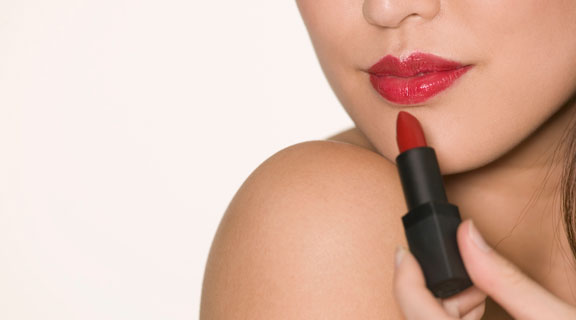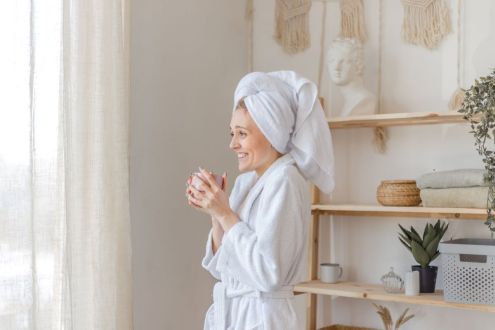The price of beauty
More than ever before, women are putting themselves under extreme pressure to appear sleek, fashionable and youthful. But has this obsession with how we look finally gone too far, asks Louise Chunn?

Women want to look beautiful. To some extent the desire to embellish ourselves is in our make-up: to use cosmetics, to dress up, to wear pretty colours, to spend a little extra time in the bathroom.
Everyone from Cleopatra and her maidservants on down to Samantha Cameron and Cheryl Cole has, on occasion, wanted to turn heads. For me, the epiphany came when a male friend looked at me rather longingly after a carefree day on the beach, only to note, ‘You’re so lucky to be a woman. You put on that red lipstick and it changes everything’.
But has that female power to transform — now speeding into the twenty-first century — taken us too far away from a healthy relationship with our true selves? From mini-me wardrobes for the under-10s through to the rise in middle-age anorexia, girls and women of all ages and classes are being pulled tighter into fashion’s grip, spending more and more time, money and energy simply conforming to an increasingly homogenised ideal of beauty. Or are modern-day tools such as cosmetic surgery, super-speed diet and exercise regimes, and ever-changing high street fashion just another way to celebrate our hard-fought independence – ‘because we’re worth it’? The truth is, feminism has always struggled with this conundrum.
Writer Linda Grant remembers when Germaine Greer’s groundbreaking 'The Female Eunuch’ was first published in 1970. ‘I was 20, and I felt like we were making up feminism as we went along. At that time, you’ve got to remember that women couldn’t go out without “their face on”; they had weekly hair appointments for a “set”. We wanted choice — to be liberated from having to look like this. Though I do think that some women were attracted to feminism because they didn’t enjoy dressing up.’
Like most modern feminists, Grant sees nothing wrong in wanting to look as good as you can. ‘It’s like with your house — you want as nice a sofa as you can find. The same is true with your approach to clothes, hair or make-up. It’s when the pursuit of looking good goes too far that it really screws with your mind.’ I share the joy of a ‘treat’ — from a new lipstick to an on-trend ankle boot — but I worry that the balance of fun versus effort is spinning out of control. Cosmetic surgery in this country is now worth £2.3 billion a year, up 17 per cent in the past two years. Everything from breast augmentation to tummy tucks to anti-ageing injectables has become not just acceptable, but close to routine. It’s no longer just actresses, reality TV ‘celebs’ and trophy wives; ordinary people are starting to go into debt to surgically stave off the imperfections or inadequacies that, they fear, may lose them the attention they think is their due.
Sarah Freethy, executive producer of an upcoming reality TV show in which women obsessed with beauty are matched with people who have facial disfigurements, says, ‘Young women see celebrities doing these things and they want to do them too’. They may not be able to get on TV or marry a footballer, but they can model their looks on those who do. Before we assume that these are young, silly girls without sensible career or life ambitions, we should consider our own attitudes. Again and again, it’s been proved that attractive men and women earn more than less attractive but equally qualified individuals. As Freethy points out, there is a spectrum of involvement with beauty and we’re all on it.
An extreme beauty addict might be unable to open her door to the postman without a full face of make-up, ‘but then I wouldn’t go to work without make-up. We’re all under pressure to look good, but what constitutes looking good is becoming more extreme,’ says Freethy.
Susie Orbach is a psychoanalyst and psychotherapist who has written a lot about women’s complicated relationship with food and their bodies. Talking about fashion and beauty, she sounds just as despairing. ‘Have you heard about the bridesmaids offered plastic surgery by the bride — so they will look perfect for the big day? Or seen the shoes with 5in heels, like a modern form of foot binding?’
Orbach and others believe that the images that we encounter every day — on the internet, TV, print media, billboards and mobile phones — draw us into cruel, self-critical comparisons. How does my hair stand up against Angelina’s mane? Have my skinny jeans been left behind on the metaphorical shelf? ‘Glamour has stopped being something we appreciate in others and try once in a while — many women now feel they have to inhabit it 24/7, and at all ages,’ says Orbach. ‘Girls and women now evaluate their bodies from the outside, and criticise them in relation to images they have absorbed.’
It’s noticeable that women spend far more time in pursuit of the holy grail of perfection than they used to. According to one magazine, getting ready for ‘a big night out’ takes an average of one hour and 12 minutes, so it stands to reason that less time is spent on other ambitions. As columnist Janice Turner muses, ‘It’s as if the market saw the feminist agenda and rushed in to supply it, so that clothes and make-up — rather than achievements — became symbols of women’s power’. So, instead of women using the choice to dress as they please, they have found themselves with higher and higher standards to reach. Look at the treatment handed out to powerful women over their looks. Politicians, business people, serious TV journalists and female Apprentice candidates are all judged on their appearance.
Women are in a double bind here. They are expected to conform to ever-higher beauty standards, but are then condemned for doing so. When asked to name a female scientist, we think of Dr Susan Greenfield, not because she’s the pre-eminent neuroscientist in the UK, but because she draws media attention with short skirts, long hair and coquettish make-up. Her plainer colleagues don’t get a look in. Fashion has taken a stronger hold over the mainstream in the past 20 years. It is no coincidence that women’s battles with their bodies have increased. Dangerous eating disorders are still rare, but every survey shows a greater number of women feeling unhappy with the way they look, and it is starting at ever-younger ages.
Dr Aric Sigman, a fellow of the Society of Biology, wrote recently that seeing so many images of thin celebrities and models has a harmful psychological effect on women, as well as a biological effect on the pre-frontal cortex of their brains. ‘When shown images of models in bikinis healthy women were asked to imagine that they were told they resembled each of them. When the model was overweight, the part of the brain associated with emotional reactions, such as unhappiness, showed increased activity in all of the women’.
You could say it started with Princess Diana, who shrank several sizes during her time as a superstar. Since then, legions of celebrities have started out ‘normal’ and, after a few unflattering shots, ended up skinny, like Sophie Dahl or Victoria Beckham. Or if there’s one who breaks through — such as plus-size model Crystal Renn — she soon diets her way to a smaller size. Fashion dictates that models should be super-slim, and retouching means that even if they’re not, they can be made to look that way.
Former Clothes Show presenter Caryn Franklin loves fashion, but not the way that marketing has stolen its individuality. ‘I hate the idea that our dreams have been appropriated and sold back to us as a set of seasonal rules, which we break at our peril,’ she says. Surely this isn’t women revelling in choice, but a case of fashion’s forces making them needy, even neurotic? With model Erin O’Connor she has started All Walks Beyond The Catwalk, which aims to show more diversity in the way fashion is promoted. Debenhams’ older models campaign is one of theirs, and they have worked with MP Lynn Featherstone on a campaign for greater honesty in advertisements. When she was younger, Franklin was one of the most visible fashion faces on the block.
But, she says, it was always about ‘who we were, not just what we wore. It seems to be a much more commercial world now. And I worry about how it affects women’. We all know that wearing something beautiful or leaving the hairdresser with a fresh head of highlights can give us a lift. As Linda Grant says, fashion is fun. ‘It’s women’s version of sport. It should make you feel good the way that men feel when their team wins.’ It is also how we express our taste and sensuality. But taking it too seriously — to the point where we’re never satisfied, and always insecure that we haven’t measured up to some universal standard of primped perfection – is a kind of madness. ‘Fashion should be at women’s service, not the other way around,’ says Grant. And she’s right.








